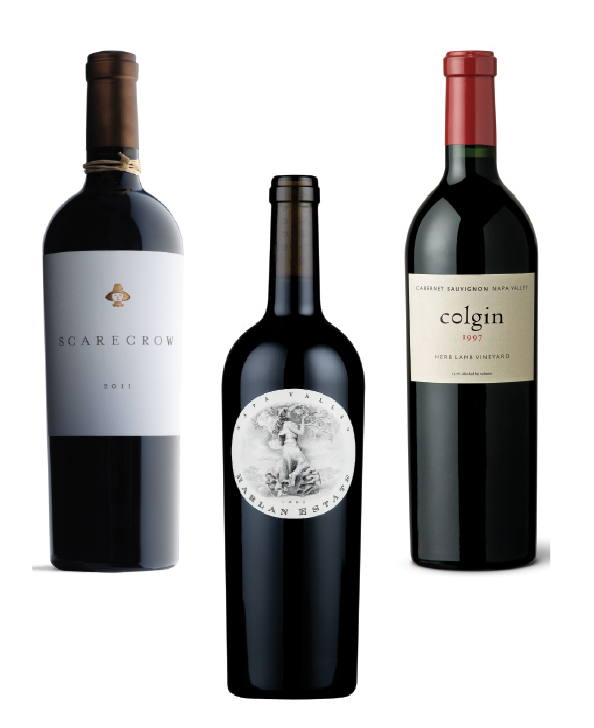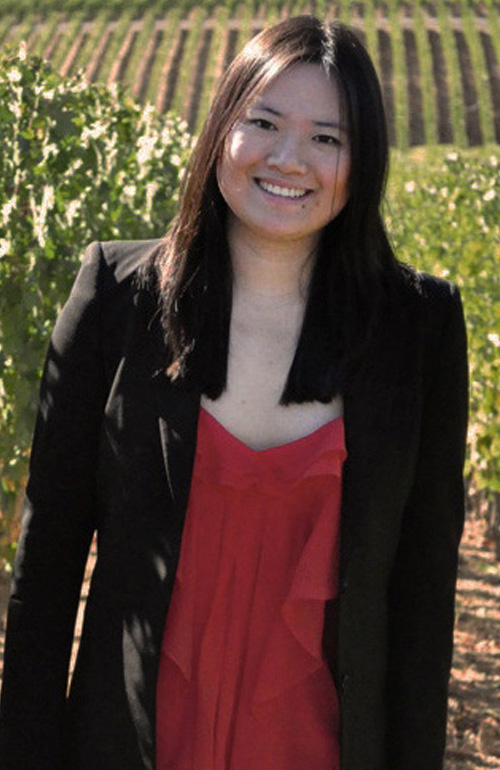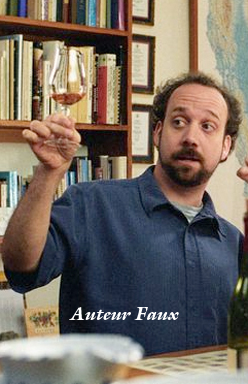Long before developing Sostevinobile, even prior to my original career in the wine industry, Your West Coast Oenophile pursued a much loftier vocation. Hubristic though it may sound, I truly believed I could elected the next pope.
Driving up the coast from Pacifica on a warm September evening in 1978, I heard the news that Pope Paul VI had just died. The broadcast further stated that the next Pope would assuredly be “younger, male, Italian, and allied with neither the liberal nor the conservative wing of the Catholic Church.” In other words, me.
With little time to mount an extensive worldwide campaign, I resorted to a decidedly grassroots effort, greeting people everywhere I went and exhorting them to write their favorite cardinal to support my candidacy. Hard to tell exactly how well I placed, as the balloting remains secret, but I finished a healthy runner-up to Venetian Cardinal Albino Luciani.
|
Ioannes Paulus PP. I proved a genial, albeit inferior, choice, as attested by his untimely death a mere 33 days after his installation. Seizing this renewed opportunity, I immediately took to the streets with a more aggressive campaign, this time pledging, with utter fidelity, “I won’t die in office!” Of course, I realized I didn’t need to worry about facing any consequences if I did break my promise. And if somehow I had managed to keep it, well…
|
 |
As I’m sure everyone knows, I wound up losing that election to Karol Wojtyla and his 27-year interregnum as Ioannes Paulus PP. II. Thereafter, the abrupt resignation of his successor, Benedictus XVI, dispelled any hope I could run once more on my immortality platform, though my apostasy still contends that, the Universe being merely a figment of my imagination, I cannot be allowed to die. Nonetheless, owning to reality, I am resolved to live at least as long to hear some hotblooded twentysomething admonish his friend “Dude, c’mon! That chick is too old! She’s got tattoos!!”
Moreover, after recent Facebook rumors had reported my likely demise—compounded, I suspect, by three months’ absence in attending to this blog—I composed a bucket list of wineries I still craved to try. While my selections may lean heavily towards several of the renowned “cult Cabernets,” they also reflect, by omission, the vast number of these wines I have already had the pleasure of sampling.
 |
Without trying to seem boastful, I have delighted over the years in such legendary producers as Harlan, Maybach, Dalla Valle, Bond, Opus One, Scarecrow, Shafer, David Arthur, Ovid, Kapcsándy, and the obligatory Screaming Eagle. Aetherial Chardonnays from Peter Michael and Kongsgaard have crossed my lips. Château Pétrus’ alter ego, Dominus, has been a perennial favorite, along with classic bottlings like Joseph Phelps’ Insignia and Ridge’s Montebello. |
I’ve enjoyed deep velvet Zinfandels from Turley and Martinelli’s Jackass Hill. astounding blends from Paso Robles’ L’Aventure and Daou that depart from orthodoxies of Bordeaux and the Rhône, and luminescent Pinot Noirs from the Sta. Rita Hills’ Sea Smoke and Oregon’s Domaine Serène. But partaking of the latter’s storied Monogram remains the first of many elusive quests. After that, my bucket list most certainly includes the Santa Cruz Mountains’ clandestine Pinot Noir producer, Rhys, and Vérité, whose three wines have all repeatedly garnered perfect 100s from Robert Parker.
My must-taste list includes a slew of a stratospherically-priced Cabernets, including Colgin, Bryant Family, Grace Family, Dana Estates, Futo, and Harbison Estate, wines for which one must apply to receive an allocation. Legendary labels include Araujo (now owned by Château Latour) and Abreu, Napa’s premier vineyardist, as well as Chardonnay virtuoso Marcassin. True viticultural connoisseurs will certainly recognize Todd Anderson’s ultra-elite Ghost Horse from St. Helena and the coveted Sine Qua Non, the cult Rhône producer from Ventura County. Lurking in the wings, Grace Family’s winemaker, Helen Keplinger produces a line of Rhône blends under her own eponymous label that seem destined for legend.
Some may find Cougar an anomaly amid such vaunted company, but I have included it for their pioneering efforts to transform Temecula into the leading destination for Italian varietals in California —who else here is growing Falanghina, Ciliegiolo, or Piedirosso? I intend to visit this burgeoning AVA on my next swing down to San Diego and explore how it is being transformed after an infestation of the glassy-winged sharpshooter nearly eradicated all of the region’s vineyard plantings in 2001.
Last month, just after compiling this list, I did manage to venture fairly far south to visit a number of Central Coast AVAs Sostevinobile has inadvertently neglected; this trip, in turn, led to a two-week sojourn of non-stop wine tastings, during which I surprisingly managed to encounter six wineries from this roster.
I will cover my swing through Paso Robles, Temecula, Lompoc, Santa Barbara, Solvang, Buellton, Santa Ynez and Arroyo Grande more thoroughly in a subsequent post. Having the advantage of a holiday weekend that coincided with the Garagiste Fest Santa Ynez Valley, I arranged to veer southward to the Wine Collection of El Paseo, a cooperative tasting room in the heart of downtown Santa Barbara, where I met with Doug Margerum, winemaker for Cent’Anni, a Santa Ynez Valley winery I had discovered after Mick Unti had challenged me to find Canaiolo grown in California. I landed up accruing four sources: the aforementioned Cougar, Sierra Ridge in Sutter Creek, Vino Noceto in Plymouth, and this wondrous endeavor. With the same fidelity Tablas Creek strives to attain with its Rhône selections or the authentic approach to Bordelaise blends one finds with Luc Morlet’s eponymous label or Bernard Portet’s wines from Clos du Val, Jamie and Julie Kellner have brought to their quest to make Tuscan-style Sangiovese in California. Toward this exacting vision, they have planted five distinct Sangiovese clones, along with Canaiolo and, as claimed, the only Colorino vines on the West Coast.
Cent’Anni also grows a small amount of Pinot Grigio and sources Tocai Friulano, Pinot Bianco, as well as some additional Sangiovese for their second-tier offerings. I began my tasting with the 2012 Buoni Anni Bianco, a deft blend of their Estate Pinot Grigio with 38% Honea Vineyard Tocai Friulano and 28% Bien Nacido Pinot Bianco. Complementing it was the 2010 Buoni Anni Sangiovese, a pure varietal expression in the style of a Rosso di Montalcino.
These two wines prefaced the object of my sojourn, the 2010 Cent’Anni Riserva. Here was a wine truly at the apex of Italian vinification in the New World, a indelible marriage of 16% Sangiovese Montepulciano clone, 16% Clone 3, 16% Clone 6, 16% Clone 23 & 34% Sangiovese Rodino, topped off with 1% each of Canaiolo and Colorino. Without question, I found a wine well on its way to greatness, dense, rich, flavorful, and almost impossible to put down. My 35-mile detour from Solvang had certainly not been taken in vain.
Under his personal Margerum label, Doug also produces California’s first Amaro, a fortified red blend infused with “herbs (sage, thyme, marjoram, parsley, lemon verbena, rosemary, and mint), barks, roots, dried orange peels, and caramelized simple syrup” and a very floral white Vermouth produced from Late Harvest Viognier. Alas, The Wine Collection’s license does not permit pouring or tasting hard alcohol, so I could only gaze upon the bottle of grappa Doug also distills from his Viognier pomace. At least I could console myself that he had named it appropriately: Marc.
After attending both sessions of the Garagiste Festival, I moseyed onto another Italian-focused endeavor, the legendary Mosby in Buellton, where I was hosted by Chris Burroughs, famed for his portrayal of Sanford’s Tasting Room Manager in Sideways. Our tasting began with crisp, clean 2013 Cortese, the predominant grape in Gavi di Gavi, and reputedly Italy’s first white varietal. We followed this superb wine with a notable rendition of a 2013 Pinot Grigio and an amiable 2013 Rosato di Cannonau (aka Grenache).
Mosby’s red repertoire included their 2009 Sangiovese and a most striking 2009 Primitivo. I was duly impressed with their Estate-grown 2009 Sagrantino and the 2008 La Seduzione, one of the better domestic Lagreins I have had the pleasure of sampling. Along with Palmina, which I also visited this trip, Mosby has pioneered the planting and vinification of Italian varietals on the Central Coast. I only wish I had been able to try their other homegrown varietals, particularly, their Traminer, Dolcetto, and Teroldego. Portents of a return visit, I am sure.
I may be a balding and bearded writer, an Italian inculcated at Ivy institutes, and an unregenerate œnophile, but in no way do I resemble Paul Giamatti. Still, I could not leave Buellton without the obligatory pilgrimage to Hitching Post II, Frank Otsini’s restaurant adjunct to his popular wine label and setting for numerous scenes in the movie. Having recently had to fend off the rather forward queries of a quasi-inebriated party of divorcées at a Sonoma winery (“no, but I understand he drops my name quite frequently”), I announced as I approached the bar, “If anyone calls me Miles, they’re getting punched out!”
I managed to escape unscathed and make it on time the next morning to cover another entry from my bucket list, Paso Robles’ eclectic Linne Calodo. Truly a connoisseur’s winery, its elusive nomenclature belies a line of superb Rhône blends, along with a few proprietary mélange or two combining Zinfandel. I was quite taken with the 2013 Rising Tides, a well-balanced marriage of 40% Syrah, 32% Grenache, 18% Mourvèdre, and 10% Cinsault. The predominantly Zinfandel offering this day, their 2014 Problem Child (20% Syrah, 8% Mourvèdre) could have borne a bit more aging, but the 2014 Sticks and Stones (71% Grenache, 12% Syrah, 9% Cinsault, and 8% Mourvèdre) radiated with well-ripened flavors.
As with Mosby, I wish my visit could have encompassed all of Linne Calodo’s portfolio, particularly its sundry variations on GSM blends. Secreted amid the Willow Creek flatlands below the towering perches of Adelaida, this elusive yet dramatic winery—which, ironically, resembles a mountain top ski chalet—beckons further visits upon my anticipated return to Paso Robles later this year.
|
I barely had time to settle back into San Francisco before heading up to the Napa Valley for the annual tasting marathon known as Première Napa. As always, this event tests the mettle of professional œnophiles like myself—just how many tastings can one person squeeze into 48 hours?—but it continues to prove an invaluable resource, both for bolstering Sostevinobile’s wine program and for my ongoing quest for funding. An unexpected benefit this year, however, was an introduction to the wines of Sloan Estate, yet another bucket list candidate, and its rather ebullient proprietor, Jenny Pan.
|
 |
About a year or so ago, a casual acquaintance related that he had recently sat beside former owner Stuart Sloan on a flight to San Francisco and queried whether I was familiar with the winery he had founded. Much to my interlocutor’s incredulity, I conceded I had no awareness of this label—not that I should be held accountable or derelict for such an omission. According to Wines & Vines, there are 5,461 bonded wineries among the three Pacific states (4,054 California, 718 Washington, 689 Oregon) or 58% of the 9,436 premises throughout North America (USA, Canada, Mexico). Conservatively, I would estimate that there are more than 6,000 additional labels produced at West Coast facilities, meaning that I have barely cataloged ⅓ of the producers Sostevinobile’s wine program is targeting. I took great umbrage at his disparagement, yet resolved to familiarize myself with such a highly prestigious brand.
Before I had a chance to set up a visit with Sloan, I stumbled upon their table at Première’s Women Winemakers Winetasting, an annual benefit at Bardessono. I had intended to make haste with this event, an unscheduled stop between First Taste Yountville and the Appellation St. Helena trade tasting at Raymond, but amid an exchange of light-hearted banter with Pam Starr (Crocker & Starr), I espied Jenny and her winemaker Martha McClellan obscurely manning a mere sliver of a pouring station across the room. With only two wines in production annually, Sloan could have presented their entire lineup here, but unfortunately their namesake Meritage, the current vintage of the SLOAN Proprietary Red, was awaiting bottling. Nonetheless, their second selection, the ASTERISK Proprietary Red, an indelible blend of Cabernet Sauvignon and Merlot, proved more than compensatory. And with a proffered private tour of the estate now in the offing, I was duly appeased.
Less than two weeks later, I attended what may well prove to be the most impressive tasting of 2016: The State of Washington Wine at The Metreon. Having not visited San Francisco for over 15 years, this trade collective pulled out all the stops, featuring over 75 wineries and a fresh seafood bar best described as beyond indulgent. But the ultimate lure here was the presence of two of the Evergreen State’s two most acclaimed denizens, Leonetti Cellar and Quilceda Creek. Like Sloan Estate. As with most Napa’s cult labels, these bucket list wineries normally make their production available only to Mailing List members—with a four-year wait just to enroll! Having this opportunity to sample both wineries at the same time proved the pinnacle of this afternoon.
Leonetti poured somewhat secretively as Figgins Family Wine Estates, their parent label. Once I had deciphered this conundrum, I was rewarded with my introduction to a selection of their mid-range wines, the 2014 Merlot and the justly acclaimed 2013 Cabernet Sauvignon. A complete surprise was 2012 Figgins Estate Red Wine, a massive Meritage marrying Cabernet Sauvignon with Petit Verdot and Merlot; as impressive as this wine proved, though, it left me yearning for Leonetti’s much-heralded Reserve Bordeaux blend, along with their Estate Sangiovese.
No similar sense of want from Snohomish’s storied Quilceda Creek, however, which started with the 2013 CVR Red Blend, a deft mélange of 73% Cabernet Sauvignon, 14% Merlot, 6% Cabernet Franc, 4% Petit Verdot and 3% Malbec. As impressive as this wine proved, their top-of-the-line 2013 Cabernet Sauvignon Columbia Valley, a pure varietal culled from their Champoux, Palengat and Wallula Vineyards, flat-out wowed (as a wine that lists for triple the Red Blend’s price tag should). These wines completely validated Sostevinobile’s tenet that the three West Coast states should rightly be considered a viticultural continuum.
Of course, it would be highly tempting to eliminate the six wineries cited here from my bucket list, but there still looms so much more to discover about each. And why rush? The longer I keep sourcing and drinking such great wines, the greater my chances of attaining immortality surely becomes.



 Oracle World Headquarters
Oracle World Headquarters !
!  .
.